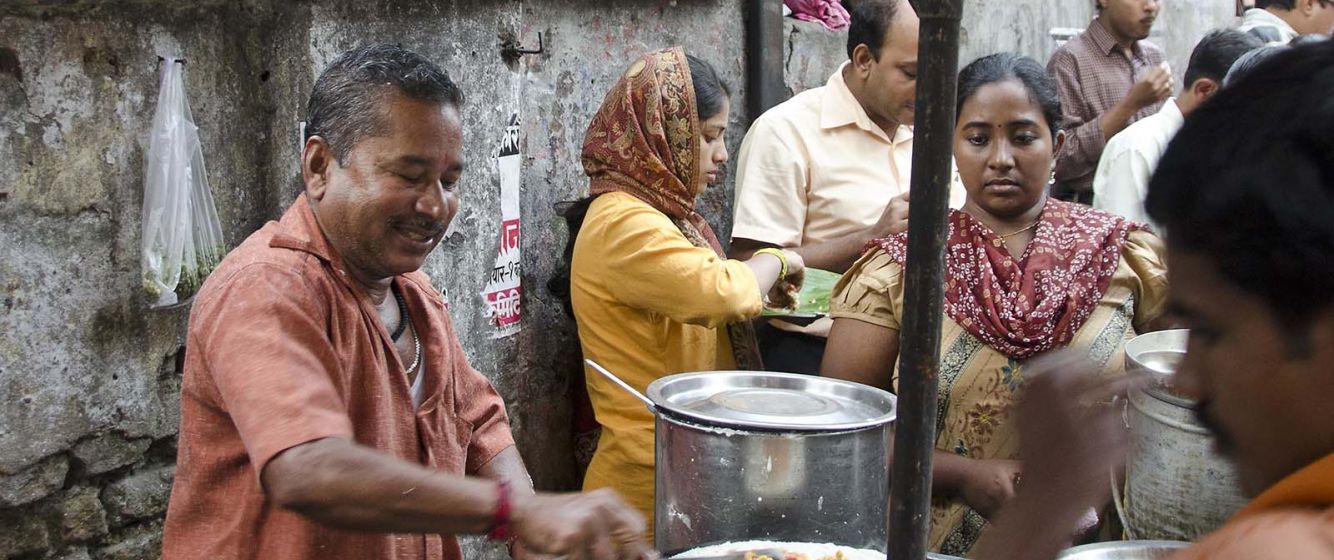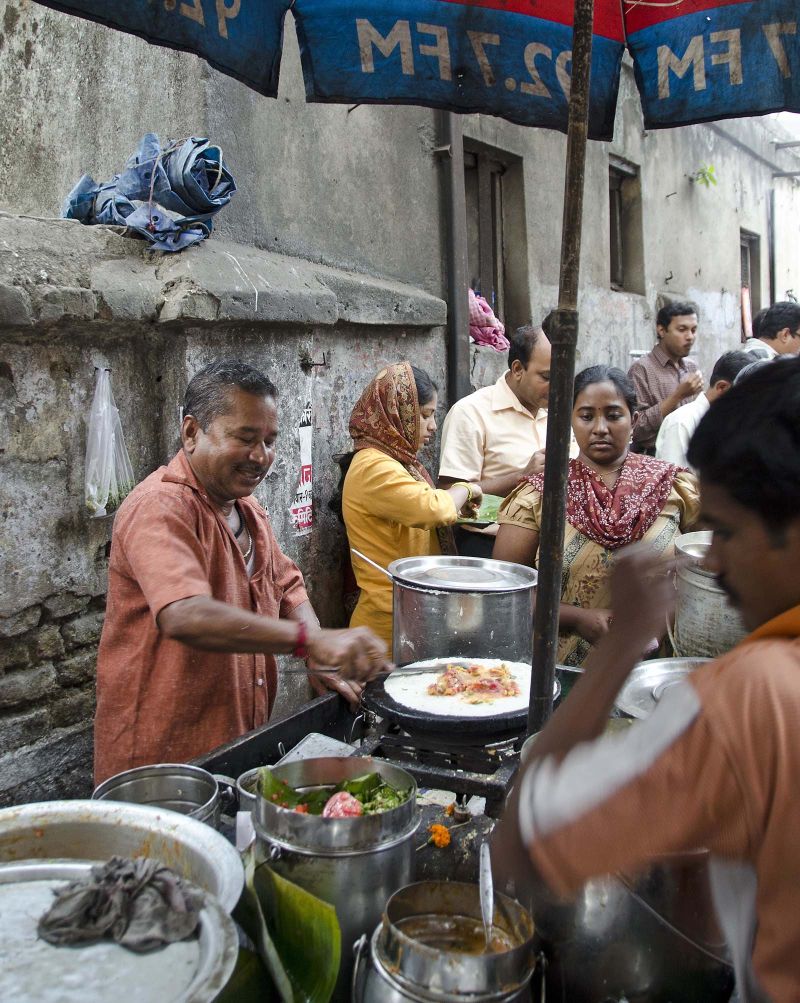
Manpreet K Janeja on rethinking street food in Calcutta, India
"Street foods are not so easy to define. Some of the challenges in defining what can be classified as street foods have been highlighted by Tinker when she asks, for instance, whether to include fresh fruits, chewing foods that are not nutritious and not meant to be swallowed such as betel nut with lime and spices, and "invisible street foods', that is 'ready-to-eat food that (is) carried through the streets by the preparer rather than the purchaser, for eating at home or to office, and (is) not for sale on the street called rantangan (Indonesia) or tiffin boxes (India) (original emphasis).
Studies of street hawkers and vendors that focus on the urban “informal economy, labour protection policies, street vending regulations, and gender, ethnicity and geographies of urban food distribution tend not to problematize the processual delineations of street foods.’ In contrast to such studies, this chapter describes what emerge as street foods in hospitality transactions in the city of Calcutta in the Indian state of West Bengal. Through an ethnographic analysis of taut negotiations of what constitute street foods vis-a-vis normal home foods in Bengali Hindu middle-class households, it explores the ways in which current hospitality practices of preparation, consumption, marketing and distribution are reconfiguring formations of the inside/outside. In so doing, it treats street food hospitality as an event for negotiating differences across scale in collaborative forms." This is an excerpt from Manpreet K Janeja's Rethinking Street Food: Street food hospitality in contemporary Calcutta, a chapter in Food Hawkers: Selling in the Streets from Antiquity to the Present, edited by Melissa Calaresu and Danielle van den Heuvel, Routledge (2016).

Business Lunch - D7K 4979 ep. Stand up lunch spot for office workers. Just off Park Street Calcutta, 2012.